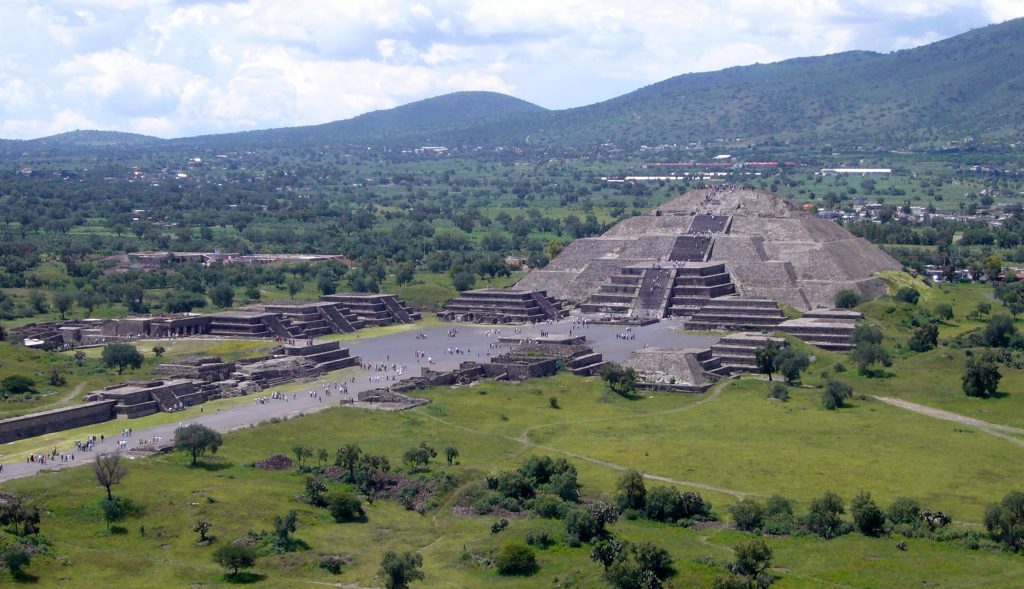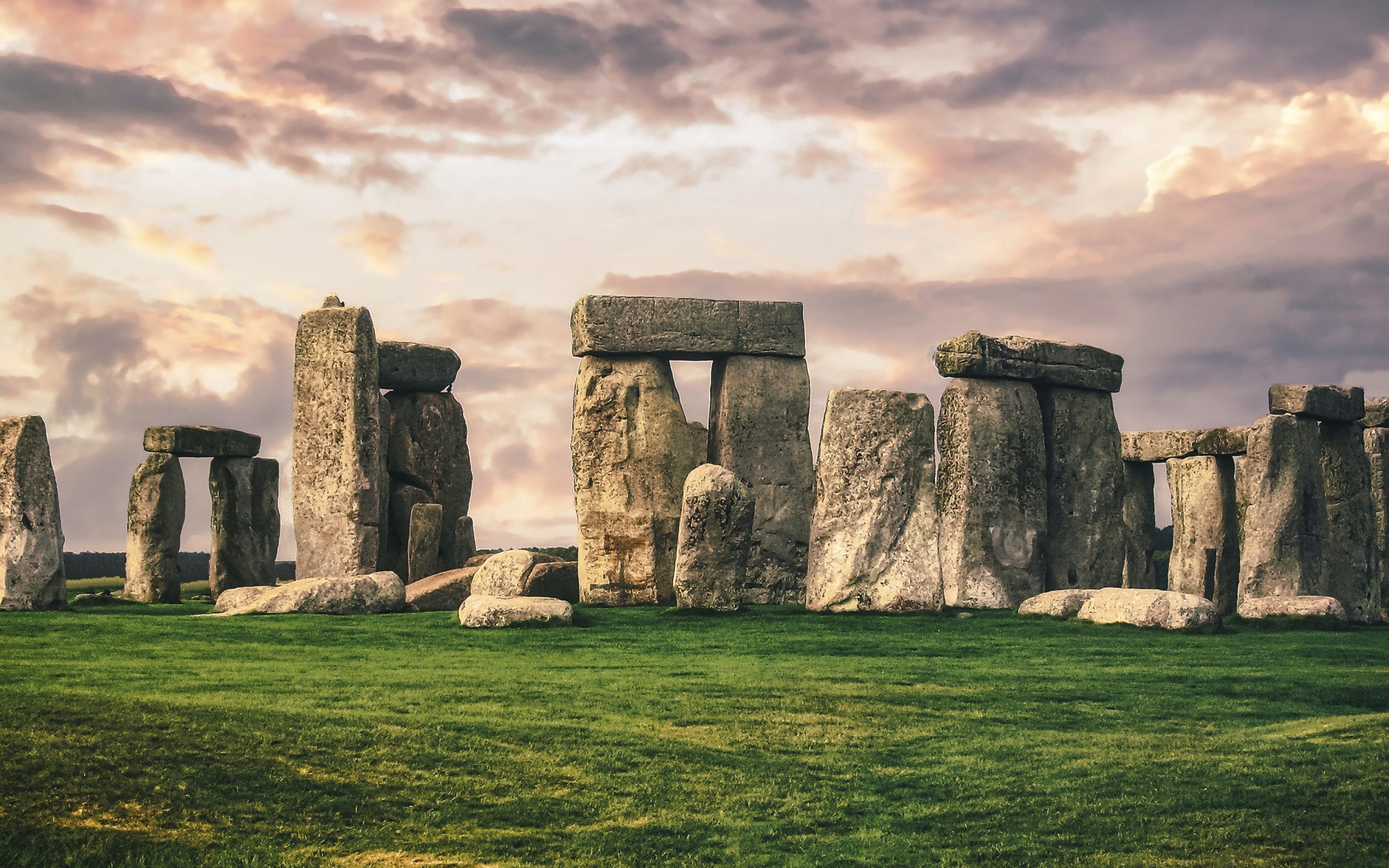Our knowledge of ancient cultures comes from the things they’ve left behind.
Abandoned tools, structures, and religious iconographies can give us a glimpse into how ancient people lived and what they believed.
However, the origins of some ancient artifacts are still a complete mystery. Who created these things, and how? What purpose did they serve? Today, we’re going to discuss four ancient structures whose existences baffle archaeologists.
Teotihuacan, Mexico

Teotihuacan refers to the ruins of an ancient city in modern-day Mexico. The ancient structures had been burned and abandoned for hundreds of years before the Aztecs happened upon it in the 15th century. They dubbed it Teotihuacan, or, “the place where the gods were created.” Due to the original Teotihuacans leaving no written records, little is known about their people or the grand city that they left behind.
Spanning over 13 square miles, the city is marked by its series of pyramids that were engineering marvels for their time of construction (~300 CE). During this era, Teotihuacan was the largest city in the entire Western Hemisphere. So why had it been abandoned by the time the Aztecs found it? Some archaeologists believe that the burned buildings are indicative of a working class uprising that took place within the city. Others claim that the city was ransacked by invaders, forcing inhabitants to join neighboring societies.
Whatever the reason for its abandonment, the city of Teotihuacan is to this day a wonder to behold and has become a popular tourist destination for those interested in Mesoamerican history.
Stonehenge, England
We’re back with another quiz question! The raised horizontal stones that join the upright stones together undoubtedly give Stonehenge an iconic look. What is the term for these stones?
— Stonehenge (@EH_Stonehenge) November 2, 2022
We’ll reveal the right answer at 5pm. #MidweekQuiz pic.twitter.com/FBAftdhk9k
While on the topic of ancient structures, one can’t not mention Stonehenge, the world’s most famous megalithic monument. Constructed some time between 3000 and 2000 BCE, Stonehenge consists of a circle of trilithons, or, structures comprised of two vertical stones that support a third horizontal stone. Each of Stonehenge’s stones weighs approximately 25 tons. The stones are made of bluestone, which can be found in the Preseli Hills, 150 miles from the Stonehenge site in modern-day Wiltshire, England. This begs the question, how were these massive stones carried such a distance? And how were they erected? These are only parts of the mystery.
Stonehenge’s purpose is only partly understood. We know that it acted as an observatory of sorts, its trilithons aligning with the sunrise at the summer solstice, as well as the sunset at the winter solstice. It is speculated that the monument doubled as a burial ground, as traces of human remains dating back to ~3000 BCE have been found at the site.
A huge misconception surrounding Stonehenge is that it was constructed by the Celtic Druids (a rumor that present-day Druids have certainly propagated). However, in actuality, construction of Stonehenge began before the Celts even arrived in Britain. It is now widely theorized that the monument was built by three separate tribes at three different times.
Göbekli Tepe, Turkey
Göbeklitepe drew half a million visitors in the first eight months of 2022. Göbeklitepe was added to the UNESCO World Heritage List in 2018.https://t.co/1LNP1dSAwz#Turkey #Göbeklitepe #Unesco #travel #Tourism #history #world #heritagelist pic.twitter.com/VwkYl86Uey
— TravelAndTourWorld (@TTW_ezine) October 31, 2022
Upon first glance, Anatolia, Turkey’s Göbekli Tepe may not seem as impressive as the other ruins covered in this article. It is a 50-foot man-made hill containing hundreds of 20-foot, 10-ton pillars that are not exactly preserved in the best of conditions. This is because Göbekli Tepe is the oldest known religious monument in existence.
Even predating pottery, Göbekli Tepe was constructed between 9500 and 8000 BCE, presumably by nomadic hunter-gatherers. The artwork that adorns its pillars gives insight into the religious beliefs of these forgotten groups. Klaus Schmidt, the archaeologist whose team began excavating the site in 1996, was convinced that it was the central location for a death cult. This theory is supported by the 2017 discovery of human skulls around the site.
To this day, only 5% of the Göbekli Tepe has been excavated. It may very well be the only remaining evidence of mankind’s earliest conceptions of religion.
Nan Madol, Pohnpei

Nan Madol, located on the island of Pohnpei in the Pacific Ocean, is an ancient city built entirely on coral reefs. It is comprised of approximately 100 man-made islands, constructed from coral fill and stone. These islands are separated by narrow canals, earning Nan Madol the title “the Venice of the Pacific.”
Over 750,000 metric tons of stone was used to construct the buildings of Nan Madol. It is unknown where the stone originated from or how the builders moved it. Nor do we know why the city was built on coral reefs when it could have been constructed far more easily on land. The fact that there is no fresh water or food in the city (those things must be carried from inland) makes its construction atop the reefs even more baffling.
What we do know is that the city’s initial construction dates back to around the 8th century CE. The city acted as a capital for the Saudeleur Dynasty, the first government that united the entire Pohnpeian population.









